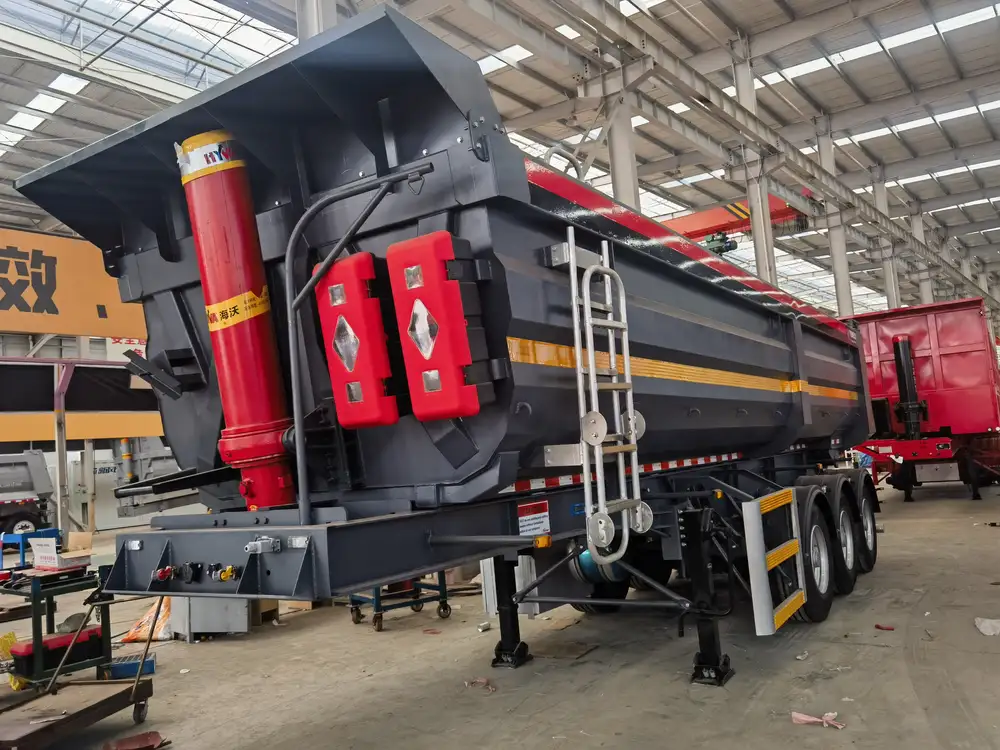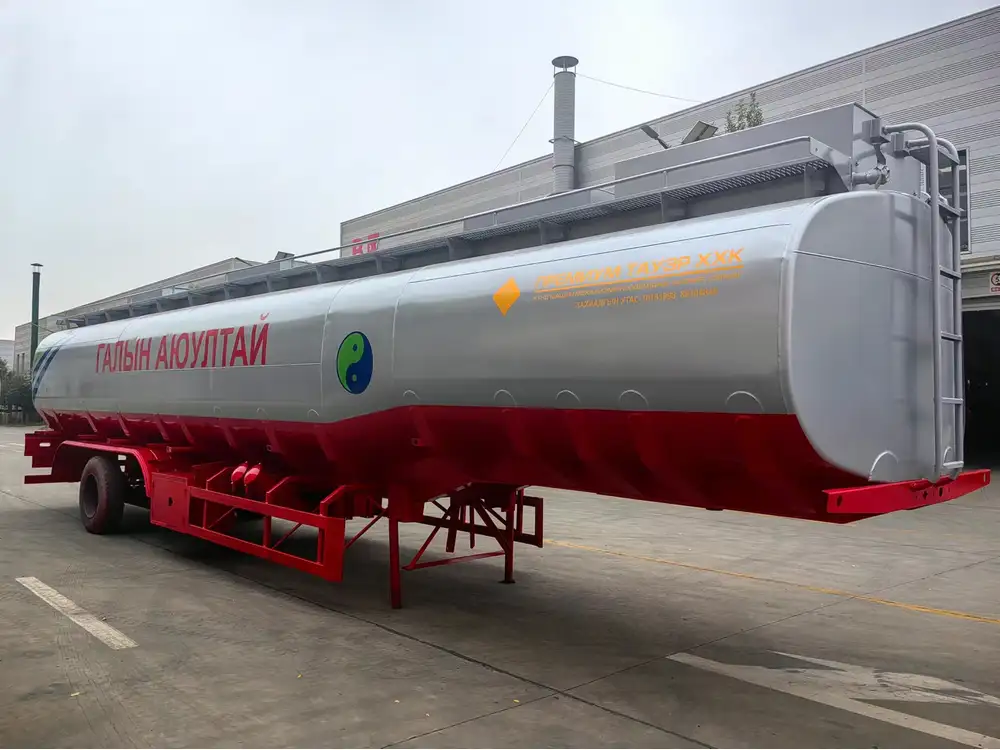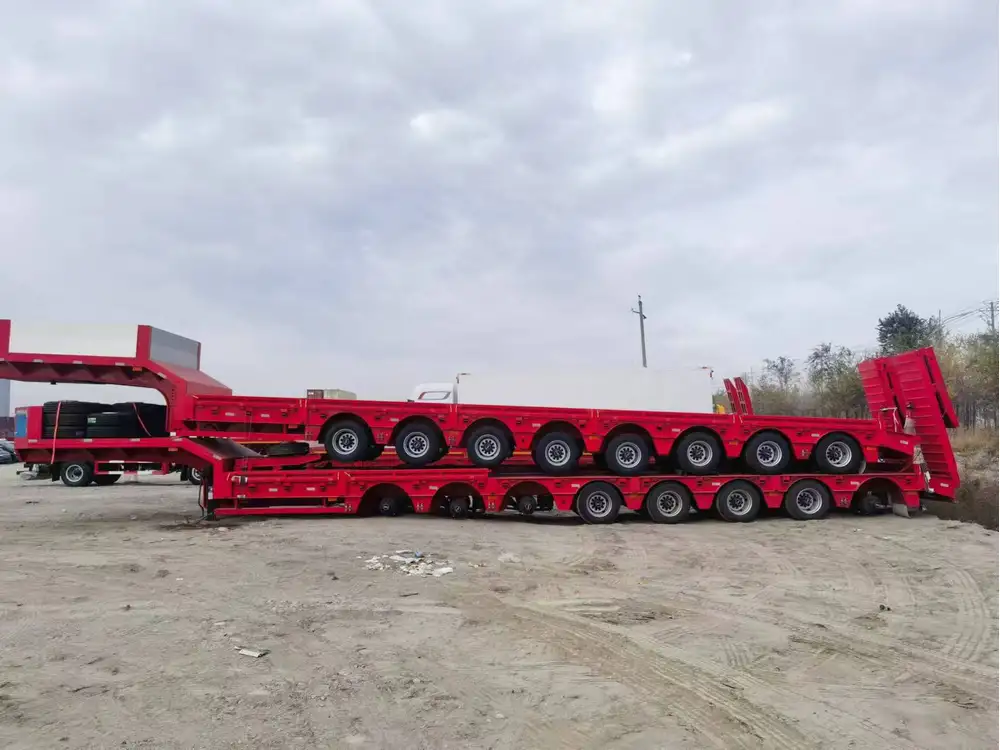Fuel trucks play a critical role in the transportation industry, carrying large quantities of fuel to various locations. Understanding how much fuel can be transported in these trucks is essential for logistics, operational efficiency, and safety. In this article, we explore various factors that influence the fuel capacity of fuel trucks, provide detailed insights into the different types of fuel trucks available in the market, and analyze how these capacities can impact operations.
Types of Fuel Trucks and Their Capacities
Fuel trucks vary in size and capacity depending on their intended purpose. Below are the primary types of fuel trucks and their typical fuel capacities.
| Type of Fuel Truck | Typical Capacity (Gallons) | Uses |
|---|---|---|
| Tank Trucks | 1,000 to 11,000+ | Transporting gasoline and diesel to fuel stations |
| Fuel Tank Trailers | 1,500 to 14,000+ | Bulk transport for commercial uses, agriculture, and construction |
| Refueling Trucks | 2,000 to 5,000 | On-site refueling for machinery or vehicles |
| Belly Tank Trailers | 3,000 to 5,000 | Specialized transport for airlines or military operations |
1. Tank Trucks
Tank trucks are frequently utilized for transporting liquid fuels. Their design features a large cylindrical tank mounted on a truck chassis, engineered for heavy-duty applications. The most common sizes range from 1,000 to over 11,000 gallons, with specialized configurations available for specific fuels, ensuring compliance with safety regulations.

2. Fuel Tank Trailers
Often used for larger-scale operations, fuel tank trailers have higher capacities than standard tank trucks. They can hold anywhere from 1,500 to 14,000 gallons of fuel and are typically towed by a tractor unit. These trailers are ideal for transporting fuel over long distances, making them a favored choice amongst distributors.
3. Refueling Trucks
Refueling trucks, equipped with pumps and hoses, are specifically designed for on-site fueling. Their smaller capacity, generally ranging from 2,000 to 5,000 gallons, allows for maneuverability in tight spaces while maintaining an efficient flow rate.
4. Belly Tank Trailers
These specialized trailers are designed for transport in support roles, particularly in military or aviation applications. With capacities of 3,000 to 5,000 gallons, belly tank trailers offer unique advantages in strategic logistics.

Factors Influencing Fuel Capacity
When discussing the fuel capacity of trucks, several factors come into play:
1. Design and Construction
The design of a fuel truck significantly impacts its fuel capacity. Trucks designed with lighter, stronger materials allow for increased capacity without sacrificing safety. Additionally, regulatory standards dictate the maximum amount of fuel that can be carried based on the truck’s dimensions, load weight, and axel configuration.
2. Type of Fuel
Different types of fuel come with specific density and weight considerations. Gasoline, diesel, and other specialized fuels such as aviation fuel have unique characteristics that affect how much can be safely loaded into a standard-size tanker. For example, diesel has a higher density than gasoline, allowing for less volume when transporting equivalent energy units.

3. Local Regulations and Compliance
Regulatory frameworks govern the loading and transport of fuel. In many regions, the Department of Transportation (DOT) or similar authorities set stringent standards that dictate how much fuel can be loaded onto fuel trucks based on their Gross Vehicle Weight Rating (GVWR). Compliance with these regulations is mandatory to ensure the safety of the public and the environment.
4. Purpose of Fuel Transport
The end-use of the fuel also dictates the size and capacity of the truck. Fuel distributors that service individual customers may opt for smaller trucks, while those focused on commercial distribution would invest in larger capacity units. Additionally, specific industries—such as agriculture, construction, or emergency services—may require customized solutions tailored to their operational needs.
Safety Considerations When Transporting Fuel
Transporting fuel is fraught with risks. Understanding best practices and adhering to safety guidelines is crucial in mitigating hazards and ensuring compliance with legal requirements. Here are essential safety considerations:

1. Regular Inspections
Conducting regular inspections of the truck and tank is vital in identifying any wear and tear that could lead to leaks or structural failures. Components such as hoses, valves, and seals should be routinely checked to maintain their integrity.
2. Proper Training for Drivers
Drivers of fuel trucks must undergo specialized training to ensure they are aware of the risks associated with transporting flammable liquids. Their training should encompass emergency response, vehicle operations, and handling procedures.
3. Emergency Equipment
Fuel trucks should be equipped with appropriate emergency equipment, such as fire extinguishers, spill kits, and first-aid kits. Drivers must familiarize themselves with the location and operation of this equipment.

4. Compliance with Transport Regulations
Adhering to federal and state transport regulations is non-negotiable. These regulations cover aspects such as load limits, secure transport methods, and documentation requirements.
5. Community Awareness
Transporting fuel within populated areas requires open communication with local authorities and communities regarding schedules and routes. This transparency enhances public safety and helps mitigate risks associated with transit.
Calculating Fuel Needs and Economic Impact
Understanding how much fuel a truck can carry directly affects operational efficiency and cost management. Below is a guide on how to calculate fuel needs based on various operational scenarios.

1. Fuel Consumption Rates
Calculating how much fuel is needed for various operations relies heavily on understanding the average fuel consumption rates of the vehicles being fueled or operated. To determine these consumption rates, consider the following formula:
[ \text{Total Fuel Needed} = (\text{Distance} \div \text{Miles per Gallon}) \times \text{Number of Vehicles} ]2. Economies of Scale
When utilizing larger capacity fuel trucks, companies can benefit from economies of scale. Buying fuel in larger quantities typically reduces per-gallon costs. Analyzing purchase patterns enables managers to plan strategically, minimizing waste and optimizing delivery frequencies.
3. Profit Margins
Understanding transport capacity assists businesses in determining profit margins. By calculating costs associated with transport and comparing them against delivery charges, companies can create a sustainable financial model that allows for growth and stability.

The Future of Fuel Trucks: Trends and Innovations
As technology advances, the fuel transportation industry is witnessing significant transformations. Here are some key trends shaping the future of fuel trucks:
1. Alternative Fuels
With growing environmental concerns, the industry is increasingly exploring alternative fuel sources. Trucks powered by alternative energy sources, such as electric or hydrogen fuel cells, are beginning to emerge, promising reduced emissions and higher operational efficiency.
2. Enhanced Safety Technologies
New safety technologies, including automated driving systems, collision avoidance, and advanced tracking systems, are becoming standard features in fuel trucks. These enhancements not only improve safety but also foster better logistics management.

3. Telemetry and IoT
The integration of the Internet of Things (IoT) technology provides real-time data on fuel levels, mileage, and tank conditions. This insight allows companies to optimize delivery schedules, reduce idle times, and enhance overall efficiency.
4. Electrification
Electric fuel delivery trucks are a growing trend amidst efforts to reduce fossil fuel dependencies. Innovations in battery technology aim to extend the range of these vehicles significantly, promoting sustainability in fuel transport.
Conclusion
Understanding how much fuel fuel trucks can transport is not only valuable for logistical planning but also a critical factor that can influence a company’s safety, profitability, and operational efficiency. As the industry evolves, staying informed about fuel capacities, regulations, safety protocols, and innovations will enable fuel supply businesses to thrive in a competitive landscape. By ensuring compliance with safety guidelines, keeping abreast of technological advancements, and customizing solutions to meet diverse needs, companies can navigate the complexities of fuel transport successfully and sustainably.



